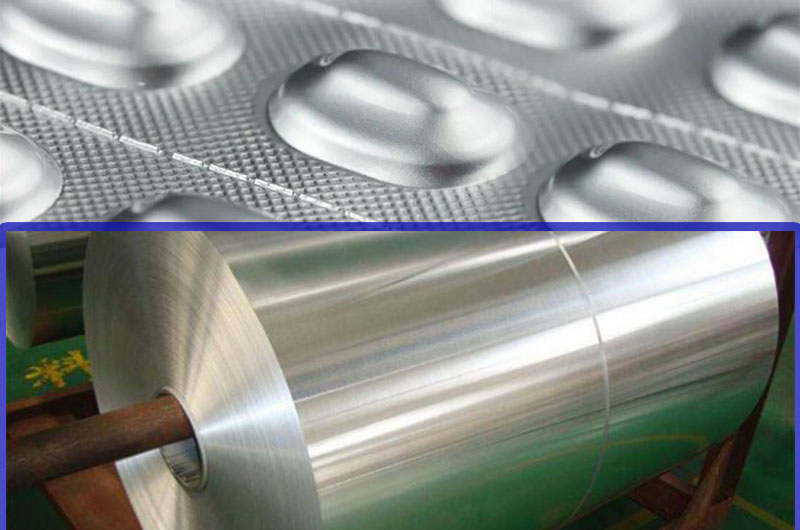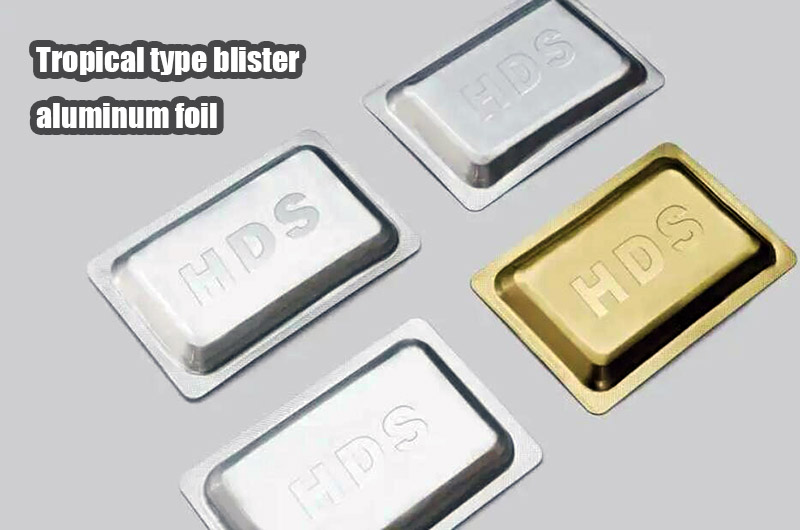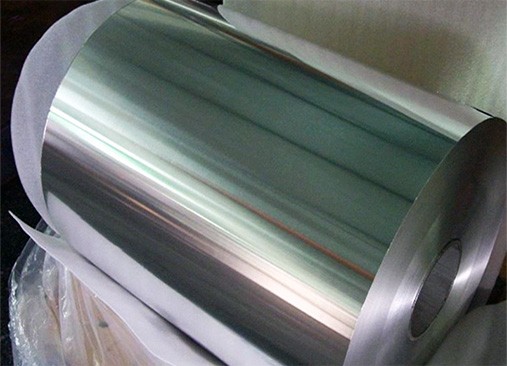- What is Aluminium Blister Foil?
- Characteristics of Aluminium Blister Foil
- Composition of Aluminium Blister Foil
- Specifications of Blister Aluminum Foil
- Advantages of Aluminum Blister Foil in Pharmaceutical Packaging
- Requirements for Blister Foil
- Applications of Aluminum Blister Foil in Pharmaceutical Packaging
- Blister Aluminum Foil Manufacturing Process
In the pharmaceutical industry, the packaging of medications plays a crucial role in ensuring the stability, safety, and effectiveness of pharmaceutical products.
Aluminum blister foil, a specialized packaging material, has emerged as a key component in pharmaceutical blister packaging, providing a robust barrier against environmental factors and preserving the integrity of medicinal products.

What is Aluminium Blister Foil?
Aluminium blister foil is a packaging material used in the pharmaceutical industry to protect medicines in blister packs. It is made from aluminum alloy, typically with a thickness of 20-25 micrometers. The aluminum foil is coated with a heat seal lacquer to ensure compatibility with the blister packaging process. This material can block moisture, gases, and light, helping to maintain the stability and shelf life of the medication. Blister packs are widely used for tablets, capsules, and other solid dosage forms due to their convenience, protection, and ease of dispensing.
Characteristics of Aluminium Blister Foil
High-quality medicines require effective packaging to protect them from environmental factors, oxygen, and moisture.
Aluminum foil is the only metallic material used in blister packaging, and it possesses features such as being non-toxic, odorless, and having excellent light-blocking properties.
Blister packs made from aluminum foil are easy to crush, making medication retrieval very convenient.
Composition of Aluminium Blister Foil
Aluminium blister foil is a commonly used packaging material in the pharmaceutical industry. It consists of a layer of thin aluminum foil and a layer of heat seal coating material (such as PVC, PVDC, or cold-forming material). This combination forms a multi-layer structure that provides a high level of protection and preservation for the medication.
Blister packaging, also known as push-through blister, provides a safe and hygienic method of protecting individual tablets.
- Molded plastic cavities: Contain cavities for individual tablets, ensuring that the medication remains safe and clean within the packaging.
- Blister film or cover foil: Made from aluminum foil, used to cover and seal the blister pack, further protecting the medication from external environmental factors.
Aluminium blister foil alloys are mainly 8011 and 8021, which have extensive applications in pharmaceutical packaging.
Uses: For the production of aluminum foil and blister foil, ensuring that the medication maintains its active ingredient effectiveness and safety during use.

Specifications of Blister Aluminum Foil
| Typical alloy | 8011, 8021, 8079 |
|---|---|
| Temper | O, H14, H18 |
| Thickness(mm) | 0.015-0.08 |
| Width (mm) | 50-1600 |
| Length (mm) | Coil |
| Treatment | mill finish |
| Functions | High obstruction, heat insulation, air tightness, printable, breakable in slightly. |
| Standard | ISO SGS ASTM ENAW |
| Price terms | LC/TT/DA/DP |
| Packaging | Standard seaworthy export packaging. Wooden pallets with plastics protection for the coil and sheet. |
Advantages of Aluminum Blister Foil in Pharmaceutical Packaging
Barrier Properties
Aluminum foil provides an effective barrier against light, moisture, oxygen, and other environmental factors, preserving the stability and efficacy of pharmaceutical products.
Hermetic Seal
The heat-sealing capability of aluminum blister foil ensures a hermetic seal, preventing the ingress of contaminants and maintaining the pharmaceutical product's integrity.
Printability
The printable surface of the foil allows for the inclusion of essential information, branding, and dosage instructions, contributing to clear communication with end-users.
Ease of Forming
Aluminum blister foil's malleability allows for easy and precise forming, enabling the creation of blister packs with well-defined pockets for individual doses.
Compliance with Regulatory Standards
Aluminum blister foil is designed and manufactured to meet stringent regulatory standards for pharmaceutical packaging, ensuring compliance with safety and quality requirements.

Requirements for Blister Foil
1. Printing Requirements
- Precision and Clarity: High-precision printing is required with rich, clear patterns to meet the aesthetic and labeling needs of product packaging.
- Automated Printing: The base foil must be capable of online printing on fully automated pharmaceutical blister packaging machines to ensure production efficiency and quality stability.
2. Moisture and Oxygen Barrier Performance
Excellent moisture and oxygen barrier performance: The foil should effectively seal with the forming materials to prevent moisture and oxygen from affecting the medication while maintaining the medication's fragrance and effectiveness.
3. Heat Sealability and High Humidity Resistance Requirements
- High Temperature Resistance: The protective layer should have excellent high-temperature resistance to ensure stability and safety during the packaging process.
- Good Heat Sealability: The composite adhesive layer should have good heat seal performance, able to perfectly seal with commonly used composite materials (such as PVC, PVC/PVDC, NY/AL/PVC, etc.).
4. Usability Requirements
Ease of Opening and Use: The aluminum foil as the base material should be designed to be easily opened or pierced by consumers for convenient access to the medication.
5. Convenience and Contamination Prevention Requirements
- Portability and Transport: Blister packs should be designed for easy carrying and storage to prevent contamination during the packaging process.
- Contamination Prevention: Prevent external contaminants from entering the packaging to ensure the hygiene and safety of the medication.
6. Automation Packaging Line Production Efficiency Requirements
Suitable for High-Speed Automation Production: Aluminum foil pharmaceutical packaging rolls should be adaptable to high-speed automated production lines in pharmaceutical factories to ensure production efficiency and line stability.
Applications of Aluminum Blister Foil in Pharmaceutical Packaging
Blister Packaging for Tablets and Capsules
Aluminum blister foil is widely used in the packaging of pharmaceutical tablets and capsules. The foil forms a blister pack that protects individual doses, ensuring hygiene, ease of use, and extended shelf life.
Unit Dose Packaging
Medications requiring precise dosing, such as antibiotics or pain relievers, benefit from unit dose packaging using aluminum blister foil. Each blister pocket contains a single dose, minimizing the risk of contamination and ensuring accurate dosage.
Child-Resistant Packaging
Aluminum blister foil can be incorporated into child-resistant blister packs, enhancing safety by preventing accidental access to medication by young children.
Barrier Packaging for Sensitive Formulations
Sensitive pharmaceutical formulations, including light-sensitive or moisture-sensitive medications, are protected by the barrier properties of aluminum blister foil.
Blister Aluminum Foil Manufacturing Process
The production of aluminum blister foil involves a multi-step process to ensure the foil's quality and suitability for pharmaceutical packaging:
1. Aluminum Rolling
High-purity aluminum is rolled into thin sheets, forming the base material for the blister foil.
2. Coating Application
The aluminum sheets undergo a coating process to apply the heat seal coating and, if needed, the protective lacquer. Precision is crucial in achieving uniform coating thickness.
3. Printing
The printable surface of the foil is then treated to accommodate printing. Essential product information, branding, and other details are printed using advanced printing technologies.
4. Slitting and Cutting
The coated and printed aluminum foil is then slit into rolls or cut into sheets, depending on the intended blister packaging requirements.



